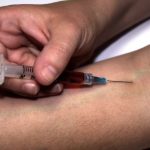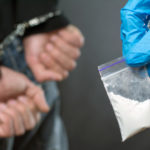Should Our Government Fund Innocence Projects?

Imagine that you are in the wrong place at the wrong time, arrested without warning, charged, questioned, subjected to a trial, and then convicted for a crime you didn’t commit.
It’s a sobering thought, and it happens more often than you might think.
This is exactly the type of scenario that has led to a number of innocence projects being set up in the United States.
What is an Innocence Project?
The original Innocence Project was founded in the United States in 1992, and in 2004 it became an independent not-for-profit organisation.
Its two main purposes are:
- To free wrongfully convicted people through the use of DNA testing, and
- To campaign for reform of the criminal justice system to prevent further injustice.
Since the Innocence Project started, 329 people in the United States have been exonerated on the basis of DNA testing. Before their exoneration, 18 of them had been sentenced to death.
The Innocence Project estimates that people who are wrongfully convicted serve on average 14 years in prison. It also says that DNA testing has enabled police to find 140 perpetrators since the Innocence Project’s inception.
Innocence Project successes
Among the many successes of the Innocence Project and similar innocence schemes around the US is the case of Mexican national Angel Gonzalez, who served more than 20 years in a US prison before being exonerated last month of a rape and abduction conviction. Recent DNA tests showed evidence that the rape had been committed by two men, neither of whom was Gonzalez.
In 1991, two teenage girls were sexually assaulted by an intruder in their home. Even though they could not properly see the intruder’s face, they identified Joseph Abbitt as the perpetrator.
Abbitt was convicted of rape, kidnapping and burglary and sentenced to two life sentences plus an additional 10 years. At the time, DNA testing was inconclusive, and despite his strong alibi, Abbitt was convicted on the identification evidence. Subsequent DNA testing proved that Abbitt did not commit the crimes. In 2009, he was exonerated after serving 14 years in prison.
Why are Innocence Projects needed?
As we can see in the case of Joseph Abbitt, criminal proceedings place much emphasis on identification evidence, even though it can be notoriously unreliable. In California, Guy Miles was identified as a participant in a bank robbery in 1998.
One of the bank employees had said from the outset that he would struggle to identify the offender because he did not get a clear view of him during the robbery.
The other witness was overheard during the trial saying that Miles in person looked different from the photographs that she’d been shown by police. Miles was nevertheless convicted and sentenced to a minimum of 75 years’ imprisonment. He has now served 14 years. He is awaiting the court’s decision about whether a new trial will be ordered.
According to the US National Registry of Exonerations, there was a record number of exonerations in 2014, three quarters of which were based on faulty identification evidence.
There are now calls for changes in protocol when witnesses are identifying suspects via photographs or live line-ups.
The unreliability of identification evidence combined with the fairly recent emergence of sophisticated DNA testing techniques have spawned the growth of the various innocence projects in the US.
So often, the people wrongly convicted of crimes have very limited means to fund their own defence, let alone launch an appeal.
Innocence projects have been set up to give a voice and hope to people who would otherwise have no means of representation.
The innocence project Australia
In 2007, The Australian newspaper noted that Frank Button is the only person in Australia to be exonerated on the basis of DNA evidence.
Button had been convicted of rape by identification evidence, as DNA tests were inconclusive.
Sentenced to seven years’ imprisonment, he was exonerated after spending one year in prison, as DNA was subsequently found on bed sheets and testing revealed his innocence.
Button’s success was due to his lawyers being willing to take on his appeal on a pro bono basis.
While innocence projects have been set up in a few universities around Australia, including Griffith University in Queensland, they do not operate on the same level or with the same success as those in the United States.
One of the difficulties faced by the innocence project in Australia is the lack of government funding – the Howard government cut funding soon after coming into power and very limited funds have been available since then.
The Griffith University Innocence Project relies heavily on funding from the Queensland Law Society Grants Committee. The project also relies on the work of law students, who complete clinics (similar to internships) in the project as part of their legal studies.
Do we need Innocence Projects?
Like the United States, the Australian criminal justice relies heavily upon identification evidence in many cases; such evidence having led to a significant number of convictions over the years.
There can be little doubt that some of those people convicted based upon such unreliable evidence are innocent, but there is little funding in Australia to do what is required to establish this.
Government funding to innocence projects here would serve two primary purposes: to exonerate those who are wrongly convicted and, at the same time, help police to identify the actual offenders.
DNA evidence is powerful – with more than 2,000 people being identified from forensic samples taken from the scenes of unresolved crimes. Surely, if DNA evidence can be that powerful, then there should be more attention paid to DNA testing when identification evidence was relied upon to ground a person’s conviction.
Government funding
Innocence Projects in Australia will never be as successful as their American counterparts without adequate funding.
While there is some concern that government funding may cast influence over the way the projects operate, we ought to be far more concerned that inadequate funds severely restrict their services.
Reliance on volunteer law students and the goodwill of the legal community can only have limited effect.
Proper funding is needed for adequate representation and investigation and the federal government is best positioned to take up that responsibility.
At the end of the day, there is an overwhelming argument that the $3 million dollars per year that has been sought by innocence projects here is a small price to pay for justice.






